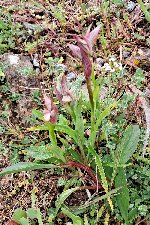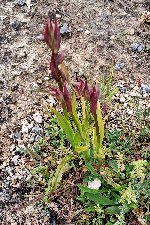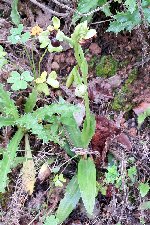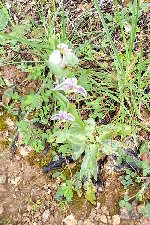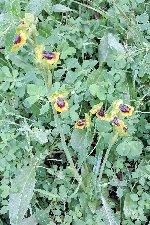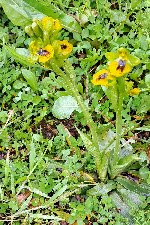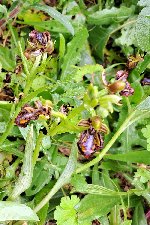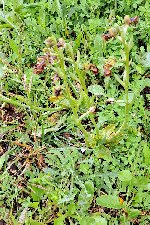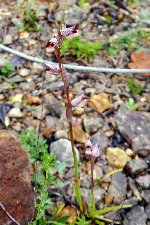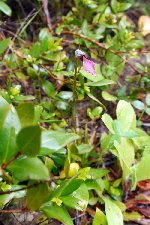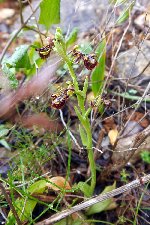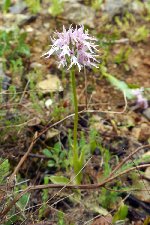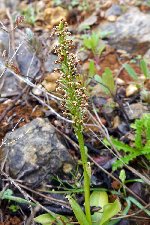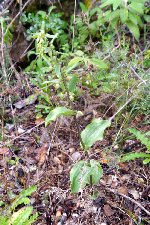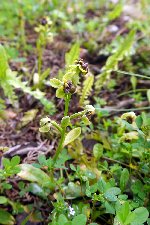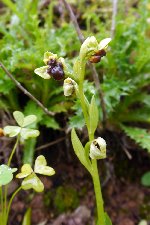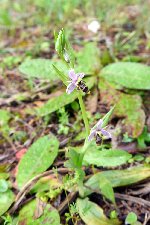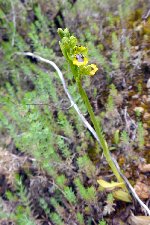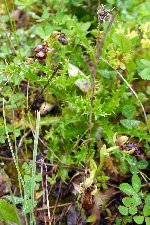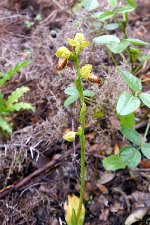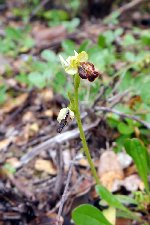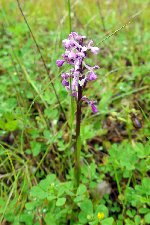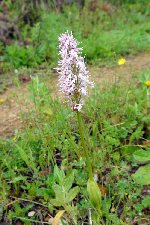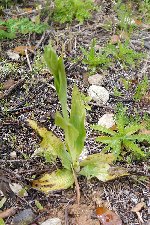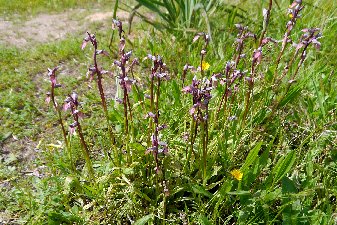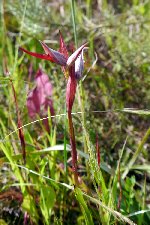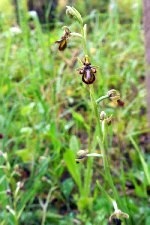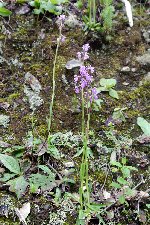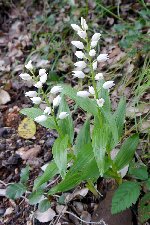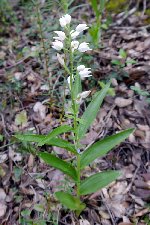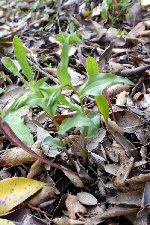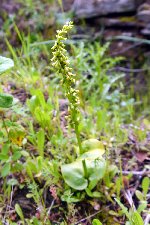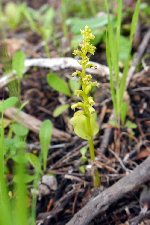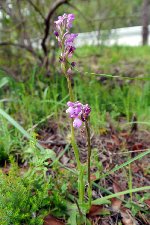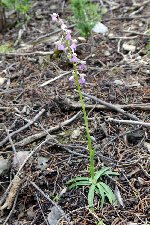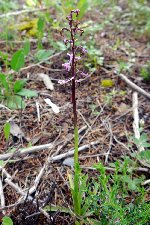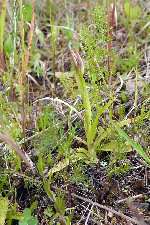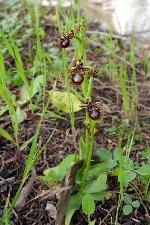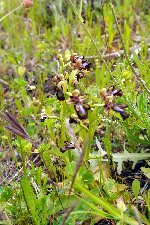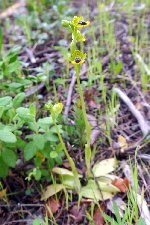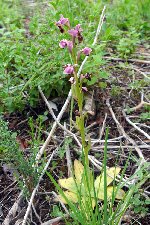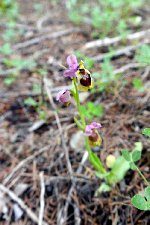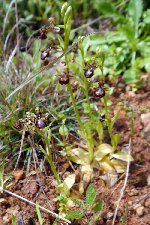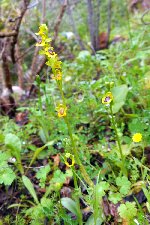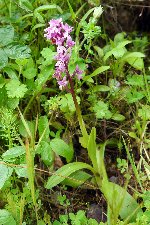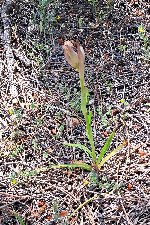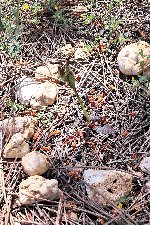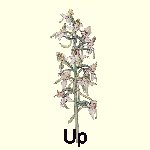|
|
|||||||||||
|
|
|||||||||||
 |
|
The first major orchid trips are in Portugal. We are based at Faro on the Algarve, away from the main tourist hot spots and looking out over a vast coastal nature reserve. This unfortunately is free of orchids. However, with a three day car hire we can head inland on three different routes taking in orchids and birds at the same time. I have a copy of Sue Woods’ Orchids of the Algarve but it seems to concentrate on those one is most likely to come across. She does include three walks to take, but these are way over to the West, not near us. But that is good. I want to find my own orchid spots, and that means looking at the maps, finding roads to follow and then likely stopping at likely orchid sites. Estoi Roman Ruins 2nd April 2025 (map) The ruins are worth a look for their mosaics, but its good to find a number of species of orchid at our first stop. There are some Tongue Orchids and I think these are Serapsias strictifolia (as opposed to S. lingua) although I should have got better snaps of the lips. Then there are four of the Ophrys genus. Ophrys bombilifera is the easiest to identify, followed by a single plant of Ophrys scolopax. The yellow bee orchids appear to be Ophrys galilaea from the broad margins. Lastly there are mirror orchids. These have rather elongate side lobes to the lip, and this is a pointer to Ophys vernixia. Not a bad haul for somewhere visited for a totally different reason
Parque Almeida Matias N270 6 km east of Sao Bras 2nd April 2025 (map) Calling this a picnic site is a bit optimistic, but were are not here for crisps and coffee. Here we find Serapsias lingua, more Ophrys vernixia, Orchis italica and a mystery orchid that has gone over and for some reason I am totally at a loss of what it could be.
N270 Sorro Estevao 2nd April 2025 (map) Another lay-by, another orchid stop. This time it is nine species found following an old track heading up towards some small holding or other. Firstly there is a surprise in a helleborine in full bud. This must be Epipactis tremolosii, distinguished from E helleborine by the leathery wavy-edged leaves. The common species only grows further north in Portugal. There are five species from the bee orchid family - Ophrys bombilifera, Op scolopax, Op galilaea, Op speculum (for a change!) and Op dyris which Kuhn has as an Op omegafera sub-species. There is also Anacamptis picta, a close relative to the green-winged orchid, but with a laxer flower and with centre lip lobe shorter than the side lobes. Bringing up the rear is Orchis italica, and another of the same genus but still in tight bud. This may be Orchis coriophora, the so-called Bug Orchid.
Quinta da Marin 2nd April 2025 (map) The last stop of the day is at a nature reserve with an HQ and lots of habitats. It lies just outside Olhao. The main interest here is birds, but there are some orchids if you look. There is a splendid large group of Serapsia lingua near the HQ, and elsewhere we find S. strictifolia and Ophrys speculum. N396 near Querenca 3rd April 2025 (map) Another day and another scenic route. While that implies we are out in the countryside, it also means that one one side of the road is a barrier protecting us from plunging down and sheer rock walls on the other. So take parking opportunities while you can. This lay-by provided us with a good number of Sword-leaved Helleborines and Anacamptis longicornu, another of Kuhn’s A. morio sub-species. The latter were interesting as they grew on a bank that was nearly vertical. Not a typical habitat. There also a single plant, possibly Epipactis tremolosii again. Nowhere N396 3rd April 2025 (map) A few miles north, not near anywhere was a stopping place that afforded orchid spotting on both sides of the road. Really mixed woodland with cork oaks and conifers. It provided us with quite a large and varied collection of orchids.
N124 near Salir 3rd April 2024 A quick stop on an open road near fielda and estancias yields only Ophrys speculum and Op. galilaea. Rocha da Pena 3rd April 2024 (map) Up in the mountains now, and looking for birds and orchids. The guide book says that orchids grow along the path up to the crags, but its a bit of a disappointment. We come down and follow the track from the parking area on the level, but this adds little. Monte Gordo 4th April 2025 (map) Today we have gone east, right up to the border with Spain to visit Reserva Natural Sapal de Castro. Sadly bird activity is not that great, but I do add to my life list so not all is lost. Afterwards down to the coast and a walk through the pine woods. Okayish for birds but as for orchids all we see is a few yet to flower, and others carefully marked by stones that have gone over. No idea of species. That’s it for orchids in Portugal 2025, and a bit of a flat ending. Luckily there were some great highlights earlier on. |
|
|
||||||||||||||||||||
